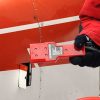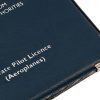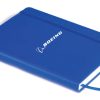Piper L-4 Cub Specifications
The Piper L-4 Cub, also known as the “Grasshopper,” is a military variant of the iconic Piper J-3 Cub, used extensively by the U.S. Army Air Forces during World War II for observation, liaison, artillery spotting, and training. Recognized by its green military paint scheme and large Plexiglas windows, the L-4 is celebrated for its simplicity, reliability, and exceptional short-field performance.
Derived from one of the most beloved light aircraft in aviation history, the Piper L-4 combines the charm of the civilian J-3 Cub with functional military upgrades that gave it vital utility in wartime operations. Today, the L-4 Cub is a popular vintage warbird among private collectors, warbird pilots, and aviation enthusiasts.
Description
The Piper L-4 Cub is a high-wing, two-seat tandem aircraft with a fabric-covered steel tube fuselage and a simple, rugged design. While nearly identical to the civilian J-3 Cub, the L-4 features extended greenhouse-style windows along the top and sides of the cabin, providing excellent visibility for reconnaissance missions.
Used as a liaison aircraft, the L-4 was capable of operating from rough, unimproved fields and was often flown just above treetops to direct artillery fire, deliver messages, and evacuate wounded personnel. It could even be launched from aircraft carriers and transported via glider.
Today, many restored L-4s are flown in vintage aircraft displays, airshows, or simply as a piece of living history. With its gentle flight characteristics and low operating costs, it remains a joy to fly for both novice and experienced pilots.
Specifications
| General Specifications | Details |
|---|---|
| Manufacturer | Piper Aircraft (originally Taylor Aircraft) |
| Role | Liaison, Observation, Training (Military) |
| Crew | 2 (Pilot and Observer/Passenger) |
| Length | 22 ft 5 in (6.83 m) |
| Wingspan | 35 ft 3 in (10.74 m) |
| Height | 6 ft 8 in (2.03 m) |
| Empty Weight | ~740 lbs (336 kg) |
| Max Takeoff Weight (MTOW) | ~1,220 lbs (553 kg) |
| Engine | Continental O-170 (A-65-8), 65 hp |
| Propeller | Fixed-pitch, 2-blade |
| Fuel Capacity | 12 gallons usable (45 liters) |
| Cruise Speed | 75 mph (65 knots / 121 km/h) |
| Max Speed | 87 mph (76 knots / 140 km/h) |
| Stall Speed | 38 mph (33 knots / 61 km/h) |
| Range | 225 miles (360 km) |
| Service Ceiling | 12,000 ft (3,660 m) |
| Rate of Climb | 450 ft/min (137 m/min) |
| Takeoff Distance (over 50 ft) | ~950 ft (290 m) |
| Landing Distance (over 50 ft) | ~800 ft (244 m) |
Performance
The Piper L-4 Cub excels in short takeoff and landing (STOL) operations, with the ability to take off and land in tight, rough airstrips or even open fields. Its low stall speed, high lift wing, and responsive flight controls make it forgiving and easy to fly, which is part of the reason it was so successful as a military utility aircraft.
While it isn’t fast or high-powered, the L-4 offers unmatched simplicity, fuel efficiency, and low maintenance costs. Pilots love it for its hands-on flying experience, open visibility, and the feeling of being connected to aviation’s golden age.
20 Frequently Asked Questions (FAQs)
General Questions
- What is the Piper L-4 Cub?
The L-4 Cub is a military version of the Piper J-3 Cub, used during WWII for liaison, spotting, and observation. - How is it different from the J-3 Cub?
The L-4 has larger windows for better visibility and military equipment modifications. - What was the L-4 used for in the military?
It was used for artillery spotting, reconnaissance, liaison duties, medevac, and basic training. - Why is it called “Grasshopper”?
It earned the nickname for its ability to hop from short fields and move like an agile bug through low altitudes. - How many L-4s were built?
Over 5,000 L-4s were built during WWII.
Performance & Flying
- Is the L-4 easy to fly?
Yes, it is simple and forgiving, making it great for training and low-time pilots. - How fast does the L-4 fly?
It cruises at around 75 mph (65 knots). - What’s its stall speed?
The stall speed is a very low 38 mph (33 knots). - Can it fly cross-country?
Yes, but slowly—it has a range of about 225 miles. - Does it perform aerobatics?
No, it is not rated for aerobatics and is built for gentle, low-speed flying.
Building & Ownership
- Can I buy an L-4 Cub today?
Yes, restored models are available on the warbird and vintage aircraft market. - How much does an L-4 cost?
Prices range from $40,000 to $80,000 USD, depending on condition and restoration. - Is it expensive to operate?
No, it is very fuel efficient, burning 3–5 gallons per hour. - Can I build a replica?
Yes, there are kits and plans for L-4 replicas or modified Cubs. - What kind of engine does it use?
Typically a Continental A-65 engine with 65 hp.
Licensing & Regulations
- Do I need a special license to fly it?
A Private Pilot License (PPL) is typically required. - Can it be flown under Light Sport rules?
Yes, in many cases it meets LSA weight and speed limits, but check local regulations. - Does it require a medical certificate?
Not if flown under LSA rules with a Sport Pilot certificate. - Is it a taildragger?
Yes, the L-4 has tailwheel landing gear, so tailwheel training is recommended. - Is it a good aircraft for beginners?
Yes, with proper tailwheel instruction, it’s a great way to learn classic stick-and-rudder flying.








